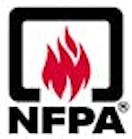The "bad feeling" highlighted in this week's Report of the Week (ROTW) describes an internal mental process that can make the difference between life, injury and death. "Bad feelings," "gut feelings" and "sixth sense" reactions to events are the body’s natural response to threat. However, we, as well as other workers in risky occupations are taught to suppress those feelings in order to complete tasks.
For us, protecting communities is the force behind the conditioning. The positive to this conditioning is we react in ways that save lives and preserve communities, often selflessly. The minus is the suppression of fear can be so complete over time that we will engage in risky and sometimes foolhardy behavior repeatedly because we have become numb to the "voice inside our head" that warns of trouble. Risk/reward is not even considered. The paradox here is to decide which of the bad feelings to park and which to act upon. We only have to be wrong once to become a memory.
This week's ROTW should give us a moment's pause to consider giving those "bad feelings" a second review before we launch headlong into a loser of a situation. After reviewing the report consider the following:
- Think back over your time in the fire service and recall an event where you had a "bad feeling" about a situation. Recount your incident. How did you react? What was the outcome?
- Describe how you handle the "bad feelings" that creep into your psyche on an incident. What are the catalysts that trigger "bad feelings" for you?
- What is your reaction when a crew member comes up and says, "(Fill in the blank) I gotta bad feelin' about this one..."
- How large a role does communication and situational awareness play in your decision making?
- What are the important elements of situational awareness for you? For your crew members?
Report Number: 06-0000181
Report Date: 03/24/2006 12:30
Event Description
On the morning of 24DEC04 at 0100, our department responded to a rekindled structure fire in a 3 story balloon construction. The first fire was heavily involved on the previous day, same shift. The department attempted an interior attack.
After some time, the structure was deemed unsafe and the department went to a defensive posture. Approximately 20 minutes later, the OIC created a "task force" of 3 firefighters from our department and 3 from a mutual aid department to attempt an interior attack on the 3rd floor.
There were no accountability tags from the other department. When we started walking into the house, I stated that I had "a bad feeling" about the situation and was wary of going back into a home that was deemed unsafe a half an hour ago.
As we made our way into the third floor, our department split from the mutual aid department. We all remained on the 3rd floor but in separate rooms. Another firefighter and I crawled into an attic space to hit the fire while our 3rd member stayed in the room to feed hose around a knee wall to our position.Inside the attic/crawl space, after approximately 2 minutes, we heard a large crash. We reversed our direction and once in the room, we noticed the roof had collapsed. All we could see was stars and the full moon. Our 3rd firefighter was nowhere to be found. He was buried in the collapsed roof made of very heavy slate tiles. RIT was activated and our member was removed safely by RIT with little entanglement or extrication.
Now the two of us were trapped as the rubble had blocked the stairs, our egress. We were assisted through a hole in the rubble to the stairs below the pile after 5 minutes of moving debris. The mutual aid department was the removed.
No injuries no deaths. However, the firefighter that had the roof fall on him stated he felt the roof hit his head and push him down. He stated had his head been turned in either direction even by a slight amount, he would have a broken neck or been killed.
Lessons Learned
Once a structure is deemed unsafe and you move to a defensive posture NOBODY goes back in. I also learned that if I have a "bad feeling" to let command know my concerns and not blindly follow orders. Communication goes both ways.Demographics
Department type: Paid Municipal
Job or rank: Fire Fighter
Department shift: 24 hours on - 48 hours off
Age: 25 - 33
Years of fire service experience: 11 - 13
Region: FEMA Region V
Event Information
Event type: Fire emergency event: structure fire, vehicle fire, wildland fire, etc.
Event date and time: 12/24/2004 01:00
Hours into the shift: 17 - 20
Event participation: Involved in the event
Do you think this will happen again? Uncertain
What do you believe caused the event?
- Staffing
- Weather
- Accountability
- Command
- Task Allocation
What do you believe is the loss potential?
- Minor injury
- Life threatening injury
- Lost time injury
Firehouse.com is working with the National Fire Fighter Near-Miss Reporting System to get the word out about previous fire fighter near-miss incidents. Each week, Firehouse.com will publish the Fire Fighter Near-Miss Report of the Week (ROTW). If you would like to receive the ROTW, please e-mail: [email protected] with "subscribe-FHC" in the subject line. If you have had a similar experience and would like to report it and to learn more about the program, please visit: www.firefighternearmiss.com.





